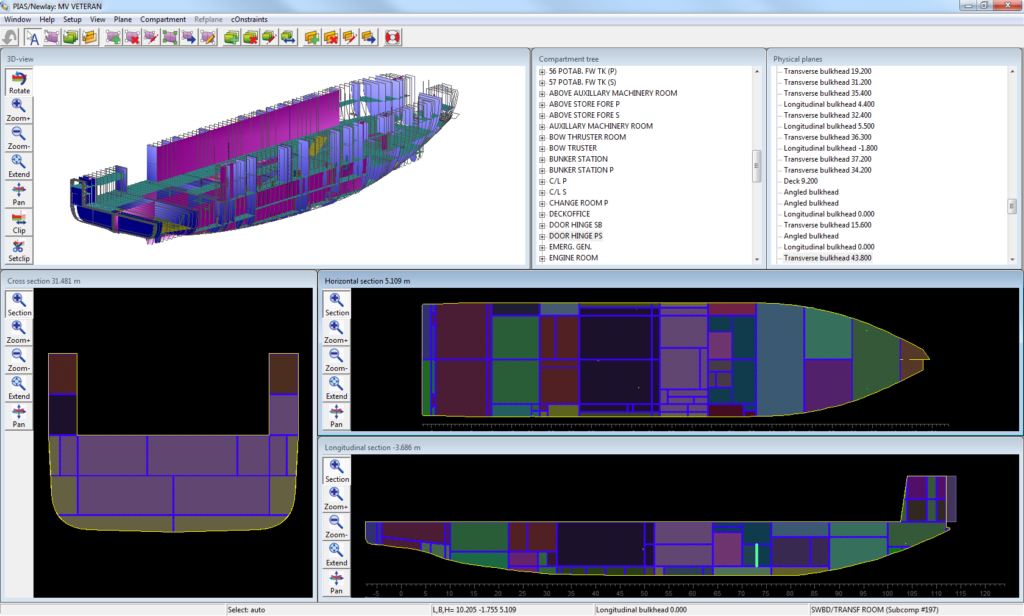PIAS module: Layout
When designing a ship, the main focus is often on her hull form. This is indeed a governing factor in ship design, which will take some iterations to achieve an optimal combination of properties. However, such attention tends to neglect the importance of a decent and efficient tool for designing the ship’s layout — the internal subdivision, consisting of tanks and spaces (which are further indicated as ‘compartments’). Wrongly so, because experience has shown that it is precisely these layout iterations that are much more frequent and therefore require more time from the designer. For this reason, a lot of research on advanced geometric modelling has been put into PIAS’ module for the design of the internal subdivision, which is called Layout. Software design considerations were a) fast working method for the user, b) fundamental modelling concepts should be versatile and easy to understand, c) all functions and features contained in a powerful and clear GUI.
As an elaboration of this, Layout has three different modelling methods for compartments:
- For each individual compartment, by giving its corner coordinates. A perfect method for small, singled out compartments.
- By splitting the ship hull, or a part of it, in two by a plane, thus creating spaces separated by that plane. In general such plane will be a bulkhead or deck, and may also have an angled orientation. A quick and robust method to create with one single command an entire array of compartments.
- By using a shape which has been defined as ‘ship’ as compartment in the real ship. Intended for compartments bounded by curved bulkheads, such as gas tanks.
These three methods can be mixed, while also tools are available to convert between the first two types. Additionally, Layout has the option to define so-called reference planes, and relate compartment boundaries or bulkheads or decks to such plane. Changing the geometry of the ship layout is then a matter of shifting that reference plane.
Once defined, the compartments can be utilized in quite some ways:
- To compute tank sounding tables, where the user can choose between different formats and unit.
- To generate a subdivision plan (after the relevant or desired views or sections have been defined).
- To generate compartment plots or tables of their bounding coordinates.
- To be applied in the sequel of the ship design process, e.g. as tanks in a loading condition, as flooded space for damage stability or as grain hold to determine grain heeling moments.
With these features and capabilities, Layout will presumably be the most efficient internal ship shape modelling program there is.


